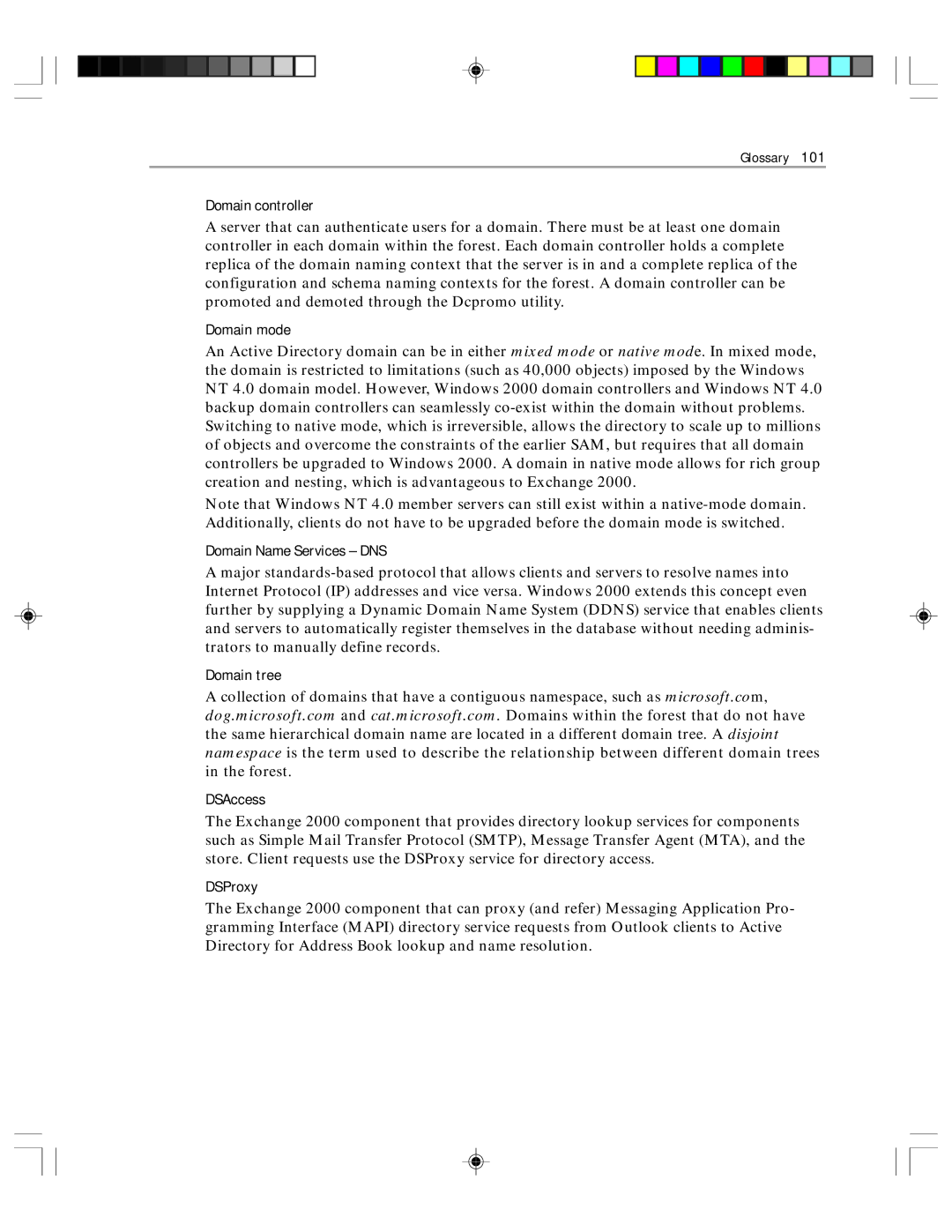
Glossary 101
Domain controller
A server that can authenticate users for a domain. There must be at least one domain controller in each domain within the forest. Each domain controller holds a complete replica of the domain naming context that the server is in and a complete replica of the configuration and schema naming contexts for the forest. A domain controller can be promoted and demoted through the Dcpromo utility.
Domain mode
An Active Directory domain can be in either mixed mode or native mode. In mixed mode, the domain is restricted to limitations (such as 40,000 objects) imposed by the Windows NT 4.0 domain model. However, Windows 2000 domain controllers and Windows NT 4.0 backup domain controllers can seamlessly
Note that Windows NT 4.0 member servers can still exist within a
Domain Name Services – DNS
A major
Domain tree
A collection of domains that have a contiguous namespace, such as microsoft.com, dog.microsoft.com and cat.microsoft.com. Domains within the forest that do not have the same hierarchical domain name are located in a different domain tree. A disjoint namespace is the term used to describe the relationship between different domain trees in the forest.
DSAccess
The Exchange 2000 component that provides directory lookup services for components such as Simple Mail Transfer Protocol (SMTP), Message Transfer Agent (MTA), and the store. Client requests use the DSProxy service for directory access.
DSProxy
The Exchange 2000 component that can proxy (and refer) Messaging Application Pro- gramming Interface (MAPI) directory service requests from Outlook clients to Active Directory for Address Book lookup and name resolution.
